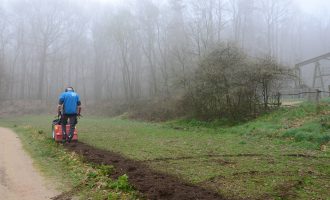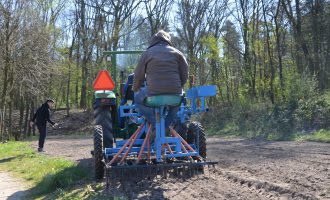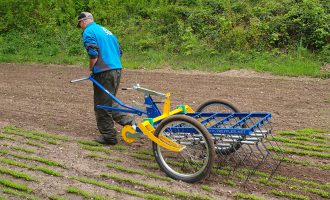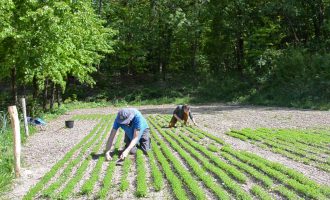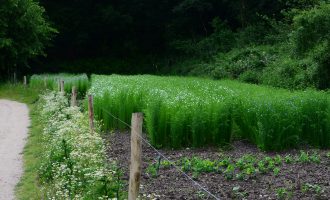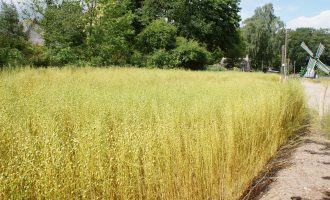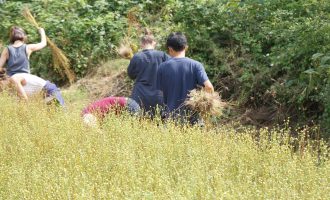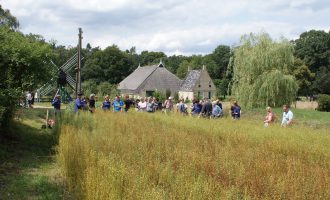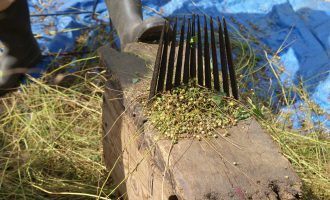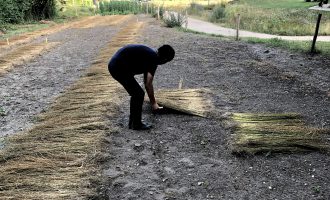traditional flax cultivation, netherlands open air museum, arnhem
Traditional techniques and knowledge are combined with contemporary variations at the Netherlands Open Air Museum. Practice Held in Common participants Takahiro Hasegawa and Anna Wetzel worked closely with groundskeeper Michaèl Brandt and colleagues to care for the flax field, supported by cultivation supervisor Karlijn Bokhorst and WUR masters student Talis Bosma. During the season they together learned about flax cultivation and applied hands-on methods involved in small-scale crop care. For volunteers and visitors to the museum, their activities created awareness of the Dutch cultural heritage of flax production and the inherent connection between agriculture and textiles.
-
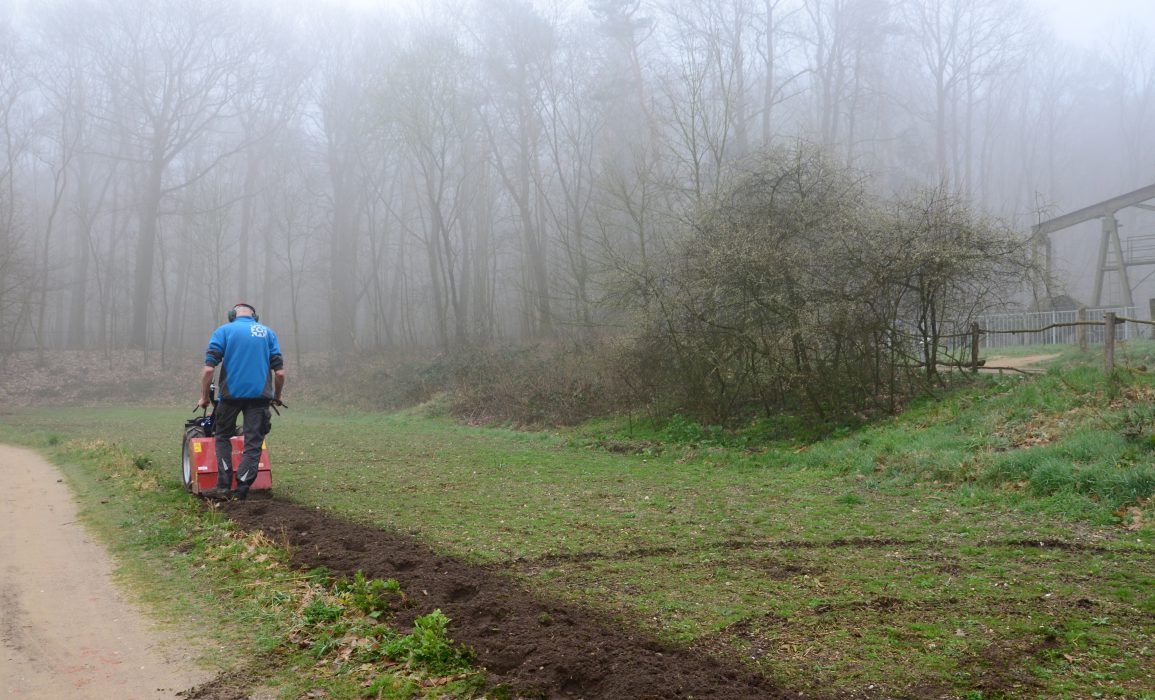
field preparation
Prior to sowing the field is ploughed to ensure a flat growing bed, created to encourage uniform flax growth. The sandy soil at this location meant it was possible to plough in the early spring, allowing the ground to rest during the winter. Photo by Anna Wetzel.
-
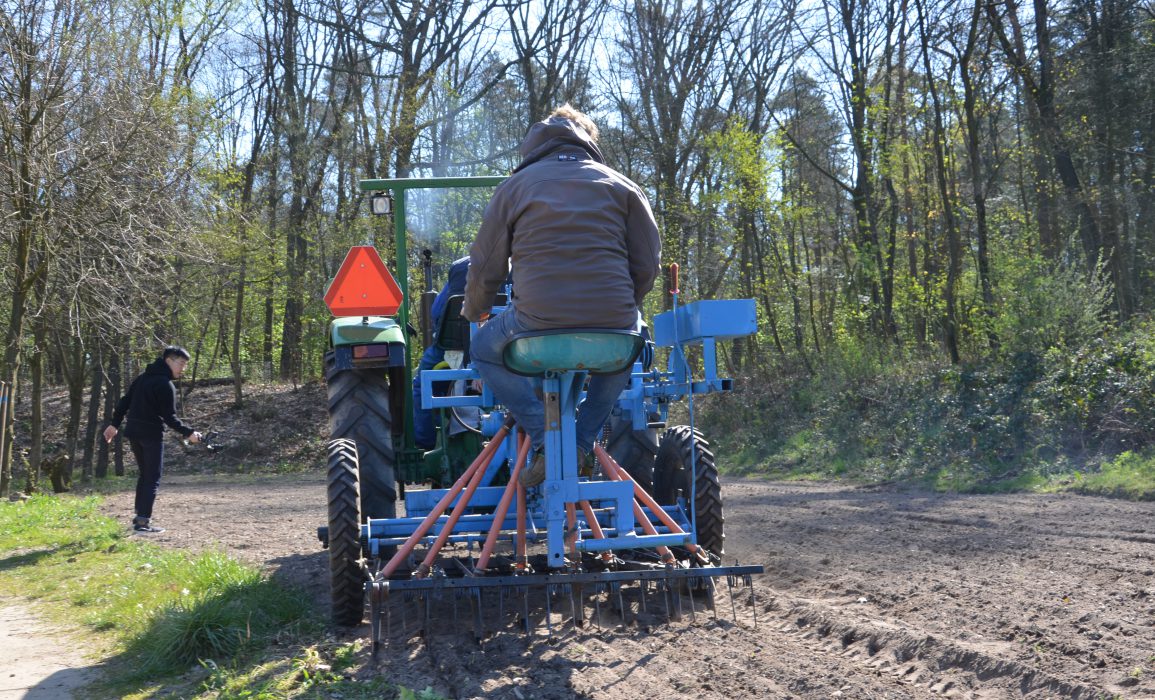
sowing the field
The fields at the Open Air Museum were sown by a local contractor using a small 1960’s tractor on April 14 2019. For the main 0.1 hectare field, three heritage varieties cultivated by Fries Werkverband were selected, based on the advice of the WUR ReFlax report: Concurrent, Noblesse, and Solido. These are the so-called mothers of numerous modern varieties, including the Lisette, the variety of choice for this season’s locations in Hemmen and Duiven. The flax was sown in following the customary row spacing of 12.5 cm, to promote crop density. Photo by Anna Wetzel.
-
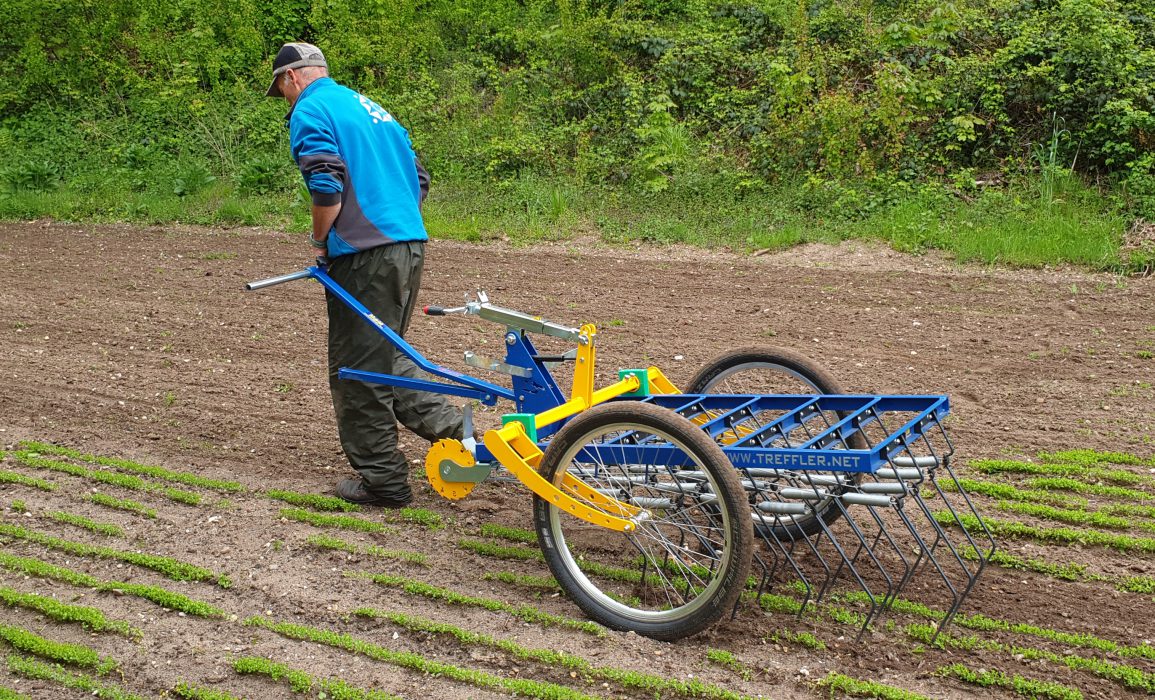
harrowing the field
The hand-pulled Tiny Treffler tine harrow is used in the early stage of cultivation to prevent emerging weeds from taking root. The tine harrow’s fine teeth disturb the soil and the weeds between the flax rows; the pressure is adjusted to suit the strength and development of the flax seedlings. Once the seedlings reach a height of 15 to 20 centimetres, the long fibres begin to develop and the plants should not be disturbed further. Photo by Karlijn Bokhorst.
-
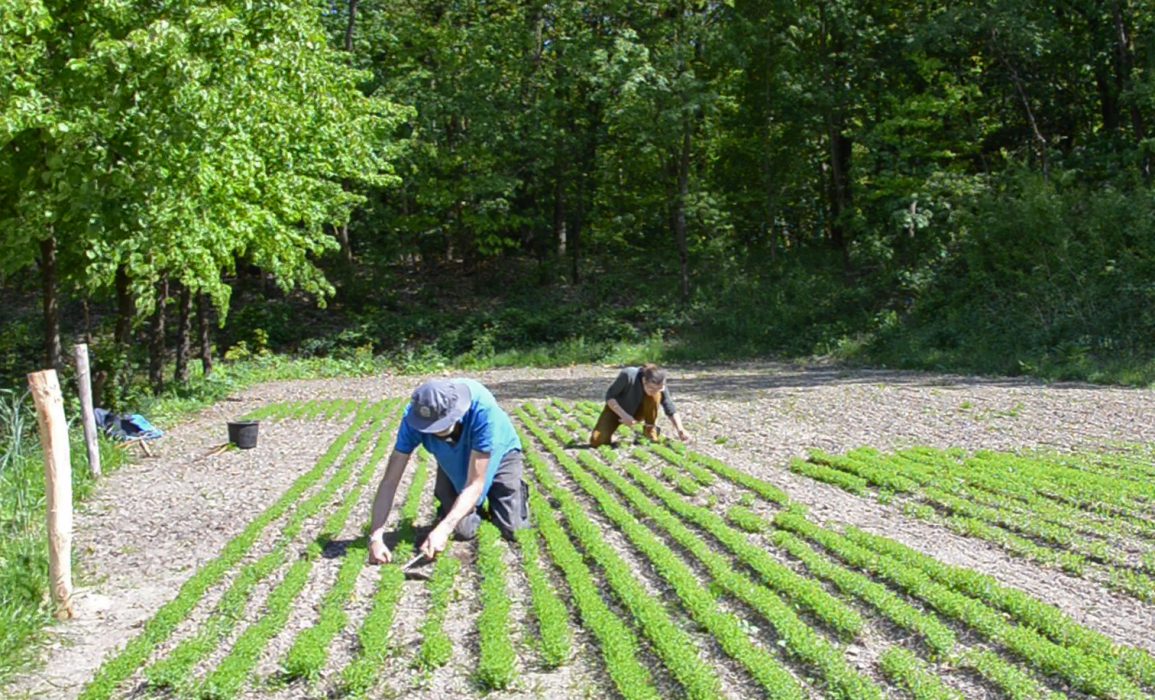
weeding by hand
Following traditional practice, additional weed control by hand is necessary to keep the field ‘clean’ and eliminate any unwanted plants that germinate within the flax rows. This generally takes place during the fourth to eighth weeks following sowing. The row spacing allows just enough room to move in between, on hands and knees, getting close to the seedlings and the ground. Michaèl, Takahiro and Anna regularly dedicated their time and energy to maintaining the field in this crucial phase of development. Photo by Karlijn Bokhorst.
-
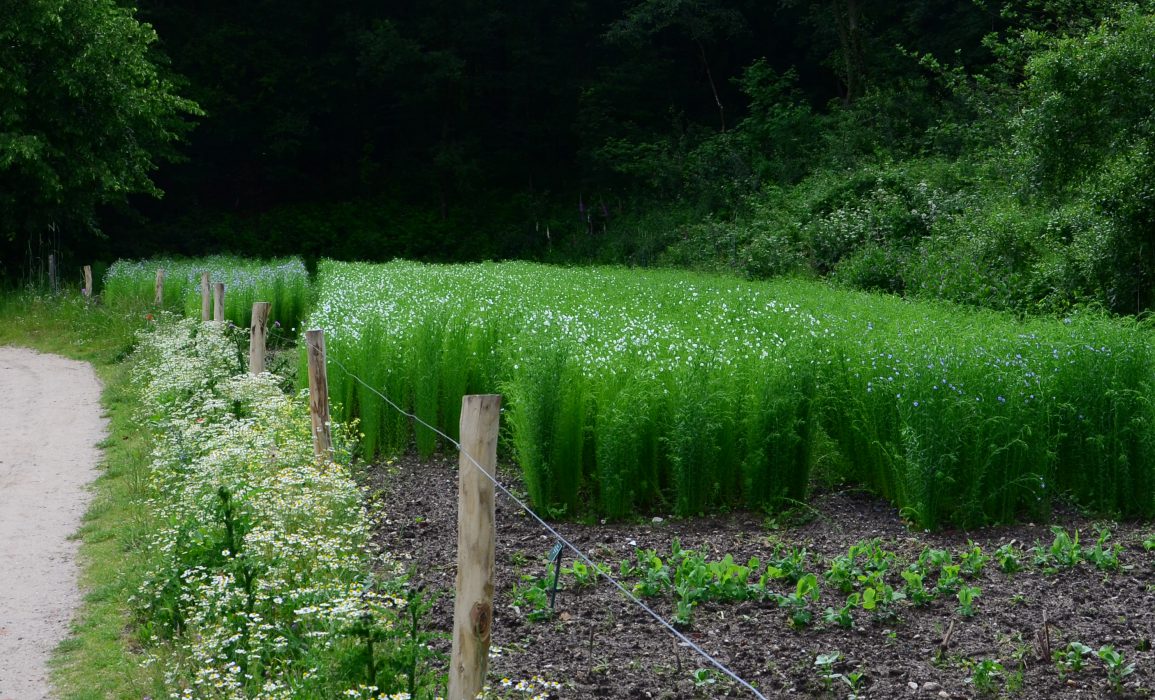
flax bloom
Flax blooms approximately 60 days after sowing, as the plant matures. Each flower on a flax stalk blooms for just one day; opening in the early morning and closing up by the afternoon. The three flax varieties showed some differences in their growth as the season progressed, potentially influenced by the sandy soil and or the lay of the land. The growth of each variety has become relatively uniform by the time the bloom takes place. Photo by Anna Wetzel.
-
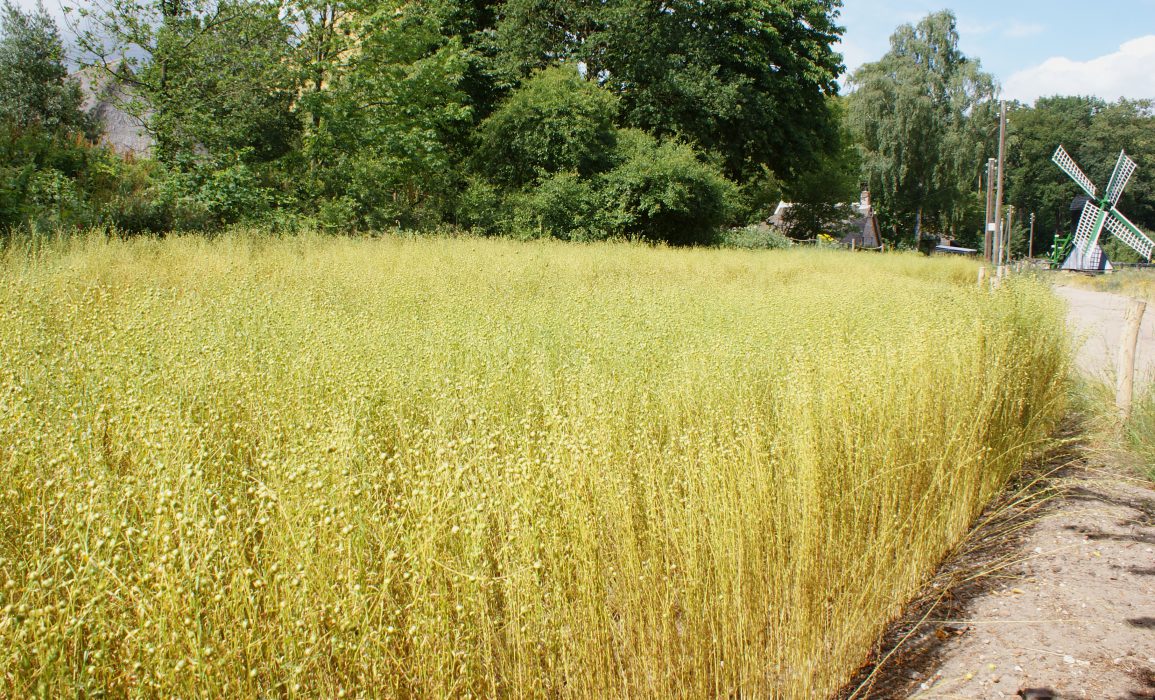
ripening flax
When the seed pods develop after the bloom, the flax plants have stopped growing and are starting to ripen. The countdown to the harvest begins. The flax stalks gradually begin to yellow and drop their leaves, as all of the energy is being directed to the seed pods. Since the flax seeds will be harvested as well as fibre, the moment of the harvest depends on when these have fully formed.
-
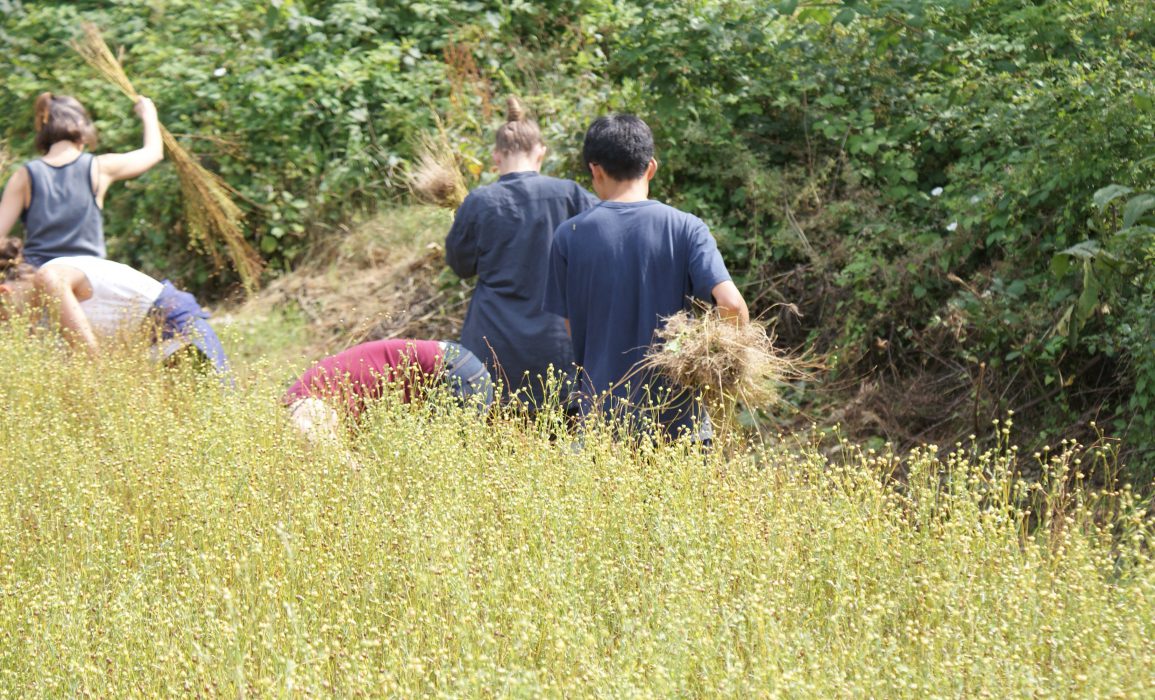
pulling the flax
The flax harvest takes place mid-summer, roughly 100 days after sowing. This is customarily considered a village activity – the Linen Project embraces this idea and invites our wider community to participate and contribute their time and energy to pull the flax from the field at the Netherlands Open Air Museum. Between the morning and afternoon’s work, the group enjoyed a traditional farmer’s lunch.
-
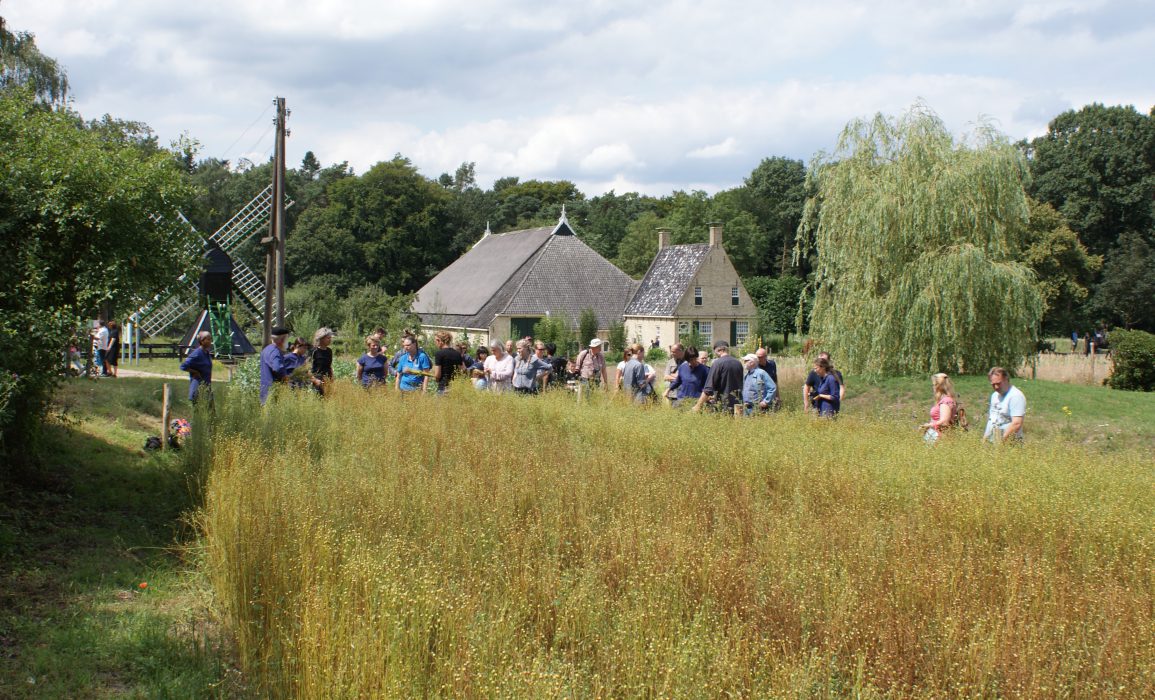
sharing haptic knowledge
The harvest activities bring the opportunity to actively share the story of linen with museum visitors; an eye-opening experience for some, and reconnecting with old knowledge for others. Many passers-by were surprised to learn that fibre used to produce linen comes from the long slender stems of the flax plant. Some were familiar with the flax fields and shared their memories and connection with this local resource.
-
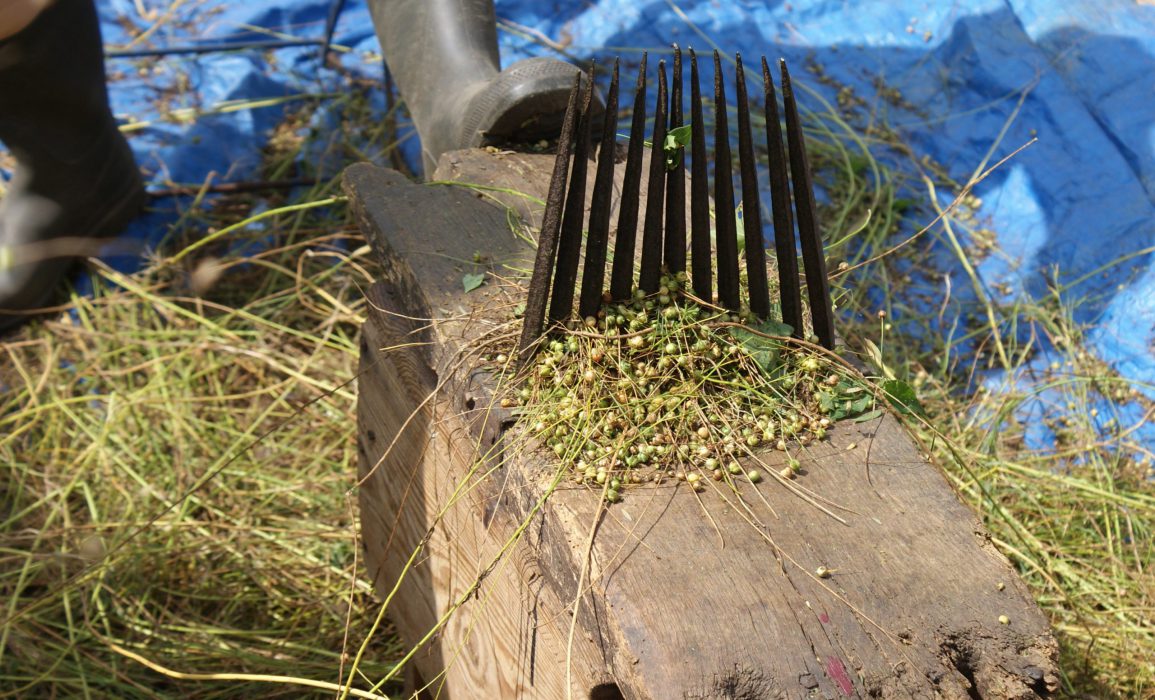
rippling the flax
The seed pods were removed during the harvest using a rippling bench; the flax is pulled through large iron pins, referred to as a ‘rippling comb’. In this original historic example used at the Open Air Museum, the pins are worked into the centre of a wooden bench. In some villages, it was customary to hold rippling competitions during the flax harvest, providing excitement and festivity while getting the job done.
-
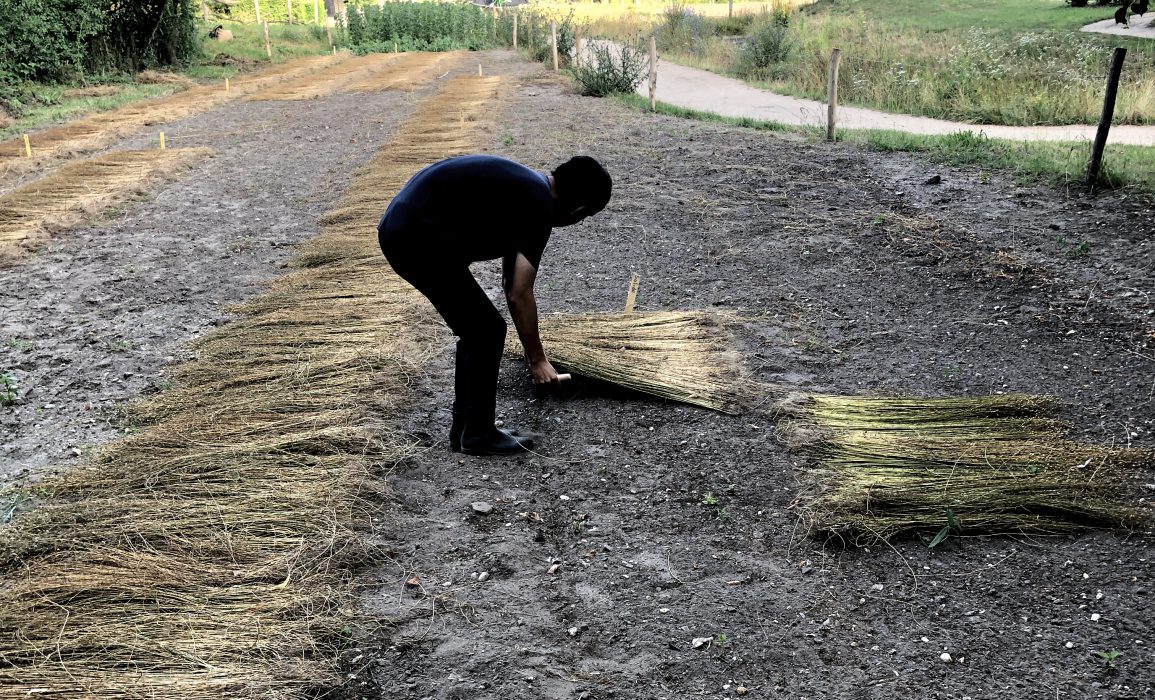
turning the flax
Since the desired fibres run through the entire length of the plant, flax is pulled from the soil roots and all. The Linen Project practices the dew retting technique, considered to be the most environmentally neutral. The flax is laid out on the soil in rows during the harvest and left out to be exposed to naturally occurring heat and moisture. Turning the flax is essential during this process, to ensure even retting takes place. The flax row is flipped over to expose the underside roughly two weeks after being pulled.
